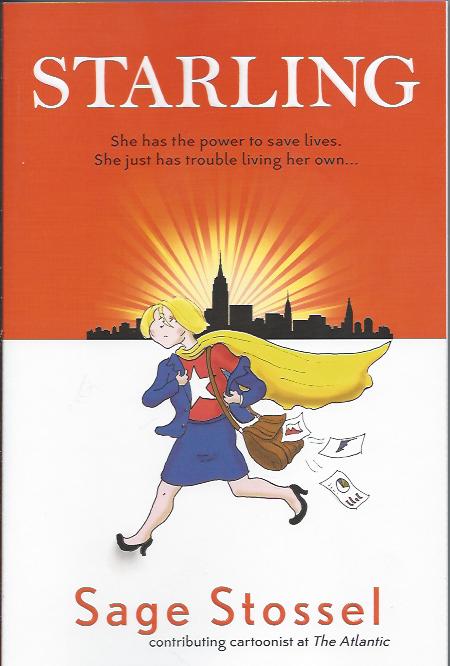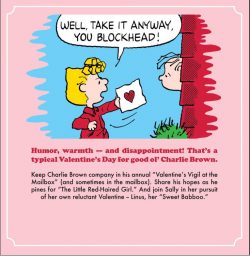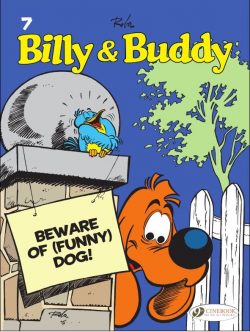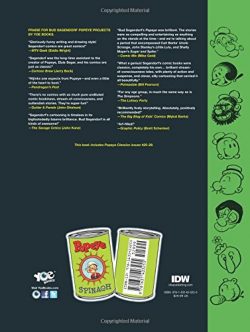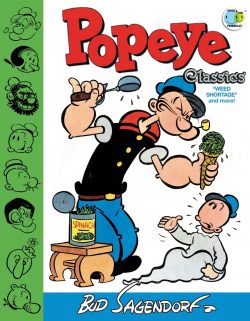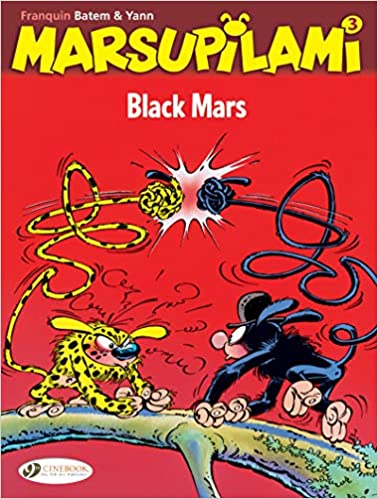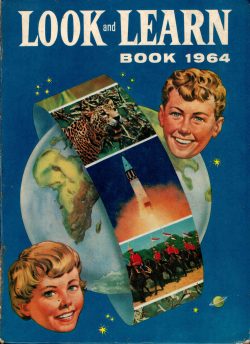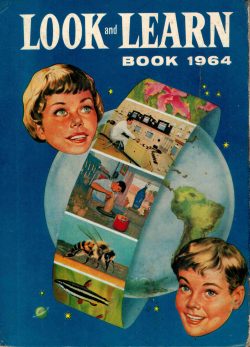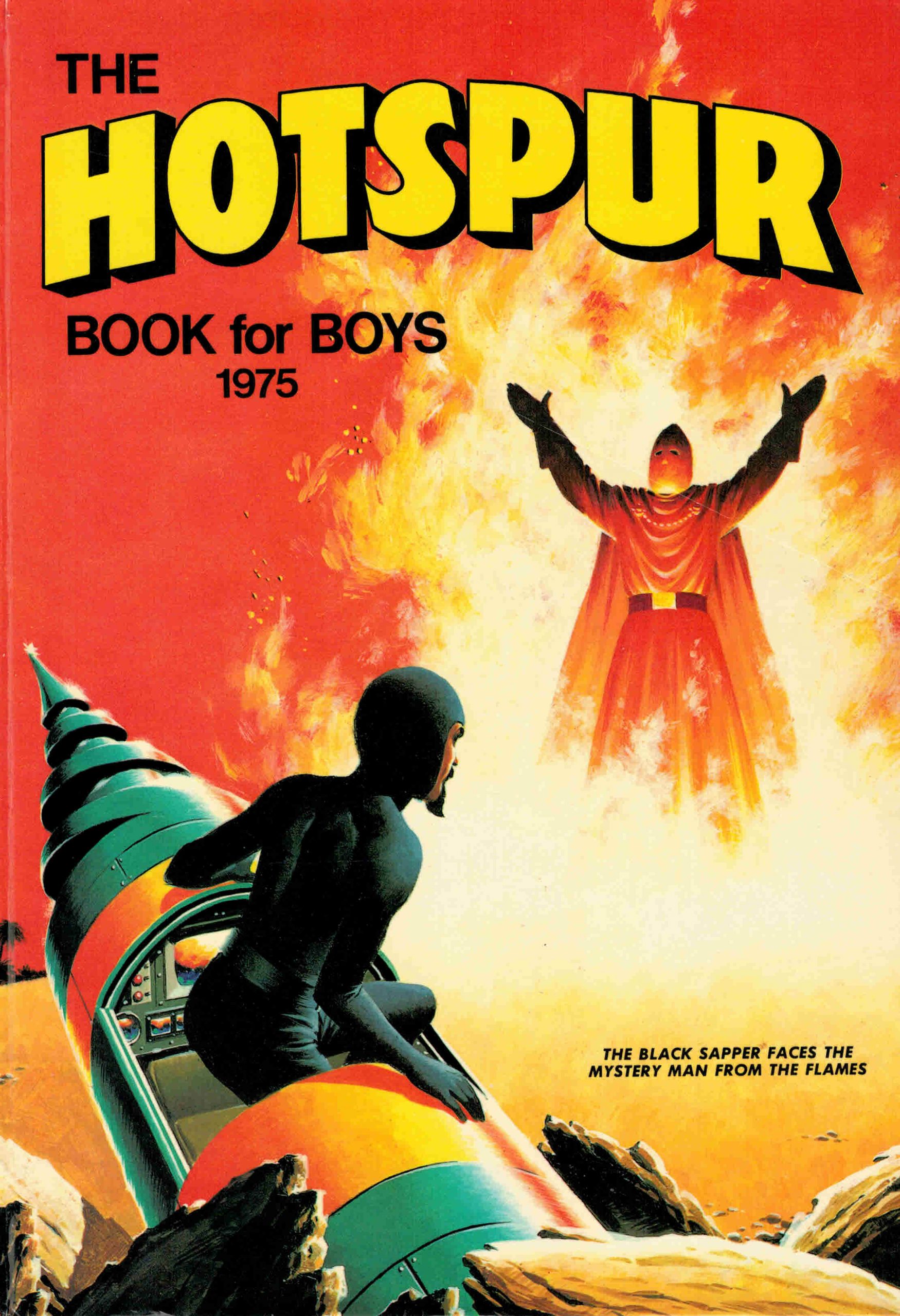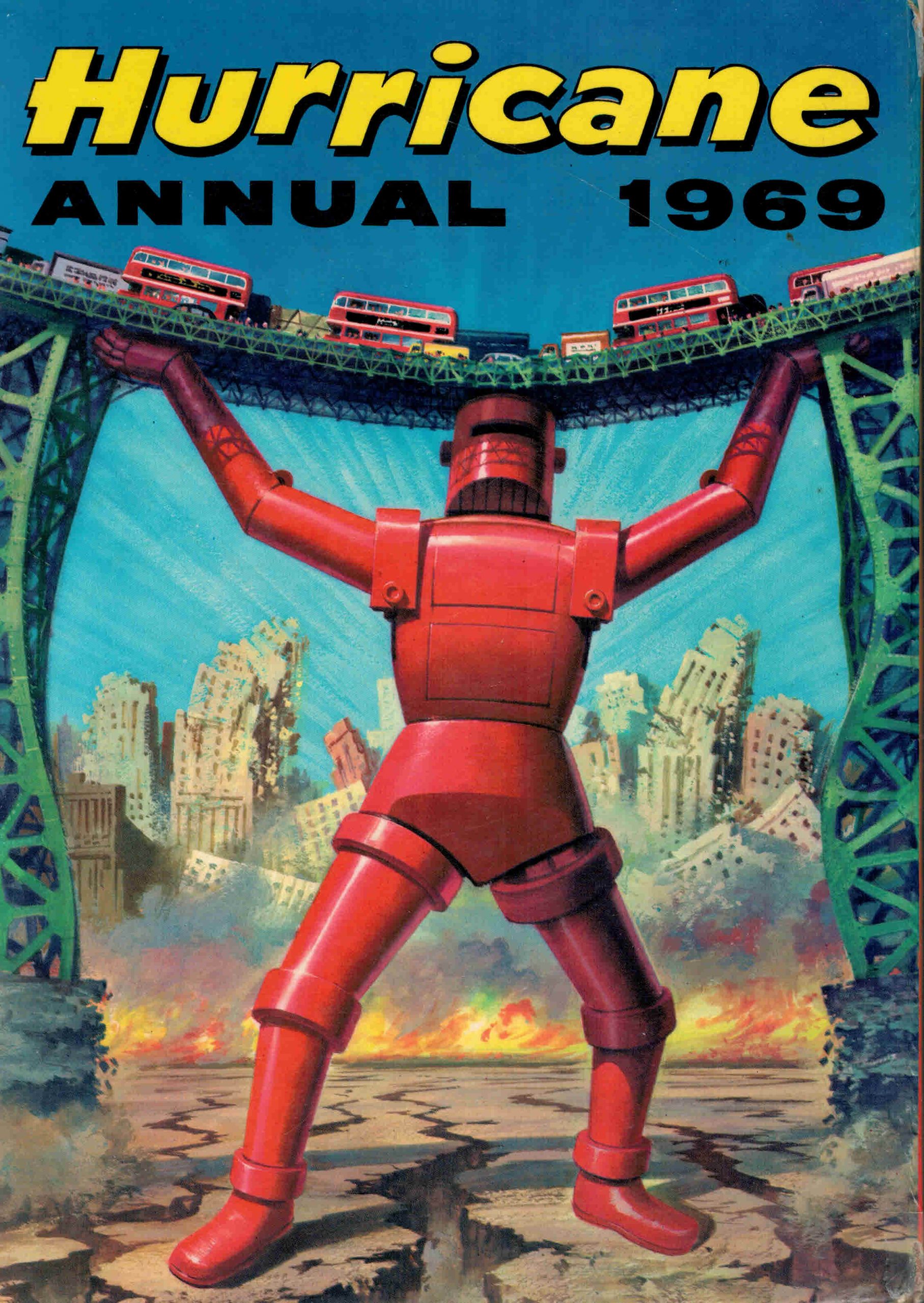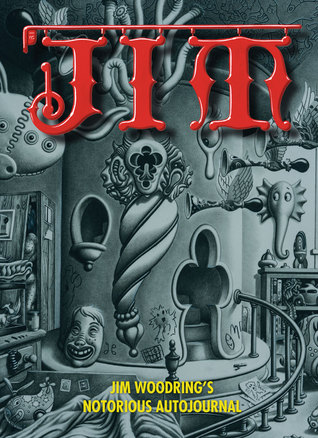
By Jim Woodring (Fantagraphics Books)
ISBN: 978-1-60699-752-9 (HB)
There are a few uniquely gifted and driven comics creators who simply defy categorisation or even description. There’s a pantheon of artisans: Kirby, Ditko, Hergé, Eisner, Clowes, Meskin, Millionaire and a few others who bring something utterly personal and universally effective to their work just beyond the reviewer’s skills (mine certainly) to elucidate, encapsulate or convey. They are perfect in their own way and so emphatically wonderful that no collection of praise and analysis can do them justice.
You just have to read the stuff yourself.
Arguably at the top of that distinguished heap of graphic glitterati is Jim Woodring. It’s a position he has maintained for years and clearly appears capable of holding for generations to come.
Woodring’s work has always been challenging, funny, spiritual, grotesque, philosophical, heartbreaking, beautiful and extremely scary. Moreover, even after reading that sentence you will still be absolutely unprepared for what awaits the first time you encounter any of his books – and even more so if you’ve already seen everything he’s created.
Cartoonist, animator, fine artist, toy-maker and artistic Renaissance man, Woodring’s eccentric output has delighted far too small and select an audience since his first mini-comics forays in 1980.
The reader may have avidly adored his groundbreaking, oneirically autobiographical Fantagraphics magazine Jim (1986 and cherry-picked for this collection) or its notional spin-off series Frank (of which Weathercraft won The Stranger 2010 Genius Award for Literature whilst 2018’s Poochytown marked Woodring’s last Frank foray to date). Perhaps it was Tantalizing Stories, Seeing Things or more mainstream features like his Star Wars and Aliens tales for Dark Horse Comics that hit home but, always, there is never anything but surprise waiting when his next story appears…
An accomplished storytelling technician these days, Woodring grows rather than constructs solidly surreal, abstractly authentic, wildly rational, primal cartoon universes, wherein his meticulous, clean-lined, sturdily ethereal, mannered blend of woodblock prints, R. Crumb landscapes, expressionist Dreamscapes, religious art and monstrous phantasmagoria all live and play …and often eat each other.
His stories follow a logical, progressional narrative – often a surging, non-stop chase from one insane invention to the next – layered with multiple levels of meaning yet totally devoid of speech or words, boldly assuming the intense involvement of the reader will participate and complete the creative circuit.
Such was not always the case and this superbly sumptuous oversized (292 x 228mm) hardcover compilation (also available digitally) gathers earlier formative and breakthrough efforts in colour and monochrome: offering the very best of his strips, paintings, poems and stories from JIM and other (sadly unnamed) sources between 1980 and 1996.
This compulsive collection also includes a new 24-page strip starring the artist’s hulking, bewhiskered, aggressively paranoid, dream-plagued family man/cartoonist alter ego, cementing his reputation as a master of subconscious exploration, surreal self-expression and slyly ironic comedic excoriation – and it’s still almost impossible to describe.
You really, really, really have to dive in and discover for yourself…
Packed with hallucinatory spot-images and JIM cover illustrations, the furtive fruits of Woodring’s ever-present dream-recording “autojournal†are prefaced by a beguiling and informative ‘Author’s Note’ before the wonderment begins with ‘Jim #1 in its entirety’: the complete contents of his very first self-published fanzine from 1980.
A master of silent expressive cartooning, Woodring’s playfully inventively fascination with and love of words and tale-making shines through in such laboriously hand-lettered, illustrated epigrammatic vignettes as ‘Lozenge’ and ‘Jim Today’, as well as witty iconographic concoctions like ‘Tales of Bears’ and ‘Troutcapper Hats’ before the premier strip saga details a doomed fishing trip in ‘Seafood Platter from Hell’, and a moment of early silent psychedelia reveals how ‘Two Children Inadvertently Kill an Agent of the Devil Through an Excess of Youthful High Spirits’…
Another personal true story and painful brush with disability and imperfection is disclosed in ‘Invisible Hinge’ whilst ‘The Hour of the Kitten’ returns to distressed, disturbed prose before the first of many outrageous faux-ads offers indispensable conscience-pets ‘Niffers’, preceding another text-trek in ‘A Walk in the Foothills’.
Cats play a large part in these early strips and ‘Big Red’ is probably the cutest bloody-clawed, conscienceless killer you’ll ever meet whilst ‘Enough is Enough’ offers graphic pause before an ad for the home ‘Dreamcorder’ segues into a disturbing poster of rural excess in ‘A Lousy Show’.
‘Particular Mind’ provides a strip encapsulating relationships, hallucinations and life-drawing, after which the tempting services provided by ‘Jim’s Discipline Camp’ are counterbalanced by a paean to pharmacopoeia in ‘Good Medicine’.
More savage exploits of ‘Big Red’ lead to a commercial presentation in ‘This is the Meat (…That Changed Me, Dad!)’, whilst ‘Horse Sinister’ describes – in prose and pictures – another disturbing dream dilemma and ‘At the Old Estate’introduces a sophisticated loving couple whose wilderness paradise is forever altered by an unwelcome visitor’s incredible revelation. Thereafter, a worried young child describes how life changed after he found his parents’ ‘Dinosaur Cage’…
The truly eccentric tale of ‘Li’l Rat’ (from a 1965 story by John Dorman) is followed by a visual feast of images from ‘Jim Book of the Dead’ and a surreal flyer for ‘Rolling Cabine’, after which ‘What the Left Hand Did’ captures in strip form the horrors of mutilation and malformation. The macabre tone-painting ‘Almost Home’ then leads to an epic strip of father and son fun beginning with ‘Let’s Play!’…
Jim’s jaunt soon transports him to ‘Powerland’ where dad meets himself, whilst ‘Nidrian Gardner’ revisits a couple of suave swells whilst ‘Looty’ offers consumers a toy they just shouldn’t own…
‘The Hindu Marriage Game’ leads our unhappy bearded fool to a place where his lack of judgement can truly embarrass him, whilst ‘Quarry Story’ explores a debilitating recurring dream about the nature of artistic endeavour and ‘This House’explains how you can live life without ever going outside again – and how’s that for prophetic and timely?
The first inklings of the mature creator emerge in absurdist romp ‘The Birthday Party’ after which prose shaggy-dog story ‘The Reform of the Apple’ leads to a dark, distressing cartoon confrontation with doom on ‘The Stairs’, before largely monochrome meanderings give way to stunning full-colour surreal reveries in ‘Screechy Peachy’.
The radiant hues remain for galvanic image ‘Vher Umst Pknipfer?’ and pantomimic rollercoaster romp ‘Trosper’ after which bold black & white introspection resumes with a naked lady and a garrulous frog in ‘Dive Deep’.
A ghostly Hispanic condition of drunkenness haunts cruelly playful kids in ‘Pulque’ whilst little Max asks dad a leading question in ‘Echo’ and radio rebels Chip and Monk meet some girls and risk the wrath of civic authority with illegal broadcasting in ‘A Hometown Tale’, before an ideal wife has a bad-tempered off-day in ‘Obviously Not’.
As the years passed, many of Woodring’s later spiritual and graphic signature creatures slowly begun to appear in his strips. Old met new in ‘His Father Was a Great Machine’ wherein strident Jim has an encounter with a phantasmagorical thing, after which little Susan and a determined slug shaped up for an inevitable collision in the prose fable ‘When the Lobster Whistles on the Hill’.
Sheer whimsy informs ‘Cheap Work/Our Hero is a Bastard’ and the bizarre offerings of ‘Jimland Novelties’, whilst ‘The Smudge-Pot’ shows what all magazine letters pages should be like. ‘Pulque’ – in full colour strip mode – returns with a message for the dying before ‘Boyfriend of the Weather’ wraps up the surreal voyaging with a homey homily, and reproductions of Jim #1, volume 2 back cover and Jim #2, volume 2 cover bring this festival of freakish fun to the finale with style, aplomb and oodles of frosting…
Woodring’s work is not to everyone’s taste or sensibilities – otherwise why would I need to plug his work so earnestly – and, as ever, these astounding drawings have the perilous propensity of repeating like cucumber and making one jump long after the book has been put away, but the artist is an undisputed master of graphic narrative and an affirmed innovator always making new art to challenge us and himself.
He makes us love it and leaves us hungry for more, and these early offerings provide the perfect starter course for a full-bodied feast of fantasy…
Are you feeling peckish yet…?
© 2014 Jim Woodring. All rights reserved.

